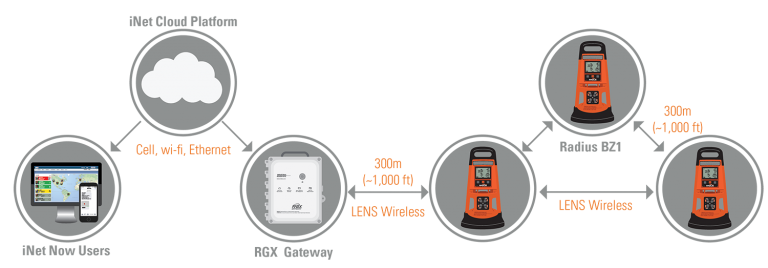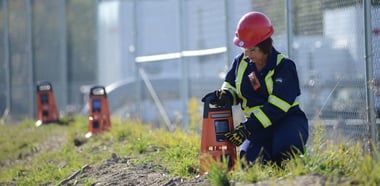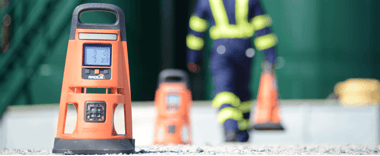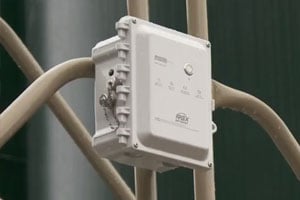Area gas monitoring plays a critical role in protecting workers by creating a buffer between them and potential hazards. It is also a reliable solution for setting up a perimeter monitoring option around high-risk zones, ensuring safety in areas where work is being performed. Incorporating real-time monitoring into your area gas detection strategy takes safety to the next level. By continuously collecting, processing, and delivering data in real-time, safety teams gain uninterrupted access to live information from any device, at any time.
This real-time data flow not only enhances safety processes but also significantly improves emergency response capabilities. For instance, an area monitor with real-time monitoring can instantly alert safety teams when combustible gases are detected, allowing for immediate action to safeguard workers and the worksite.
While area monitoring is a popular option for creating a buffer or perimeter monitoring solution, the most important reason to implement a real-time area monitoring solution in your gas detection program is to improve your ability to act in emergency situations. For example, you can program an area monitor so real-time data notifies safety teams instantly when an area monitor senses combustible gases in an area.
Applications of Area Gas Monitoring
Area gas monitors are essential during plant shutdowns, maintenance programs, and temporary detection zones to enhance worker safety when fixed gas monitoring solutions are not feasible. They are also vital in confined space and perimeter monitoring applications, offering flexibility as work conditions evolve. Often, they complement personal gas monitoring instruments, such as the Ventis® Pro5, to establish a comprehensive gas detection program.
Real-time area gas monitoring is versatile, capable of detecting gases like HCl, ClO₂, and others. Its applications are extensive, including perimeter monitoring, general safety, emergency response, hot work, confined space entry, and any scenario requiring immediate information.
Setting up a Real-Time Area Monitoring Solution
Setting up a real-time area monitoring solution can vary widely depending on your application. Whether you work with a unit of an industrial plant with a known low-level gas leak that can’t be fixed until the next plant shutdown or whether you work on a site that needs to monitor specific gas hazards across every step of the process, area monitors can be strategically placed to section off areas where work is being performed. This provides advanced notice to workers that atmospheric conditions are changing. Continuous monitoring and real-time notifications also allow safety teams to react appropriately if there is a gas-related emergency.
However, when setting up an area gas monitor, you need to ensure that you place monitors at the right distance to effectively create a connected safety barrier. These distances can vary depending on the environment, as well as the maximum distance of communication between monitors, so following manufacturer recommendations can help create the most effective solution.
In addition, when placing monitors, it’s important to consider which gases you’re detecting, the behavior of each gas compared to its environment (both indoors and outdoors), where workers are and will be, where hazards are likely to occur, and additional environment factors (such as wind).
Remote Detection of Gas Hazards with Real-Time Area Monitoring
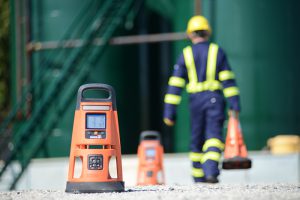
Being able to monitor hazardous areas in real time from any connected device can be invaluable and could even mean the difference between life and death. Whether you’re monitoring pipelines for chemical leaks or spills; processing food and beverage products such as dairy items, bakery goods, corn syrup and more; manufacturing semiconductors, steel, or disinfectants; or dealing with daily hazmat transportation and storage; knowing what’s happening at any given moment with real-time monitoring can increase reaction times but can also help responders know what they are facing before heading into harm’s way.
Furthermore, by pairing your real-time area monitoring solution with a cloud-based monitoring platform, you can easily view gas readings anywhere you are. Cloud-based monitoring also enables safety leaders to view area monitoring status summaries, live-monitoring maps, and receive detailed, subscription-based alerts via text or e-mail.
Overall, real-time area monitoring allows safety teams to gather a more holistic view of the environmental conditions affecting workers with advanced warnings and the ability to react quickly with all the information. Additionally, with constant access to data, both workers and employers can gain deeper insights into potential hazards–empowering management to make decisions that will improve on-site safety for everyone.
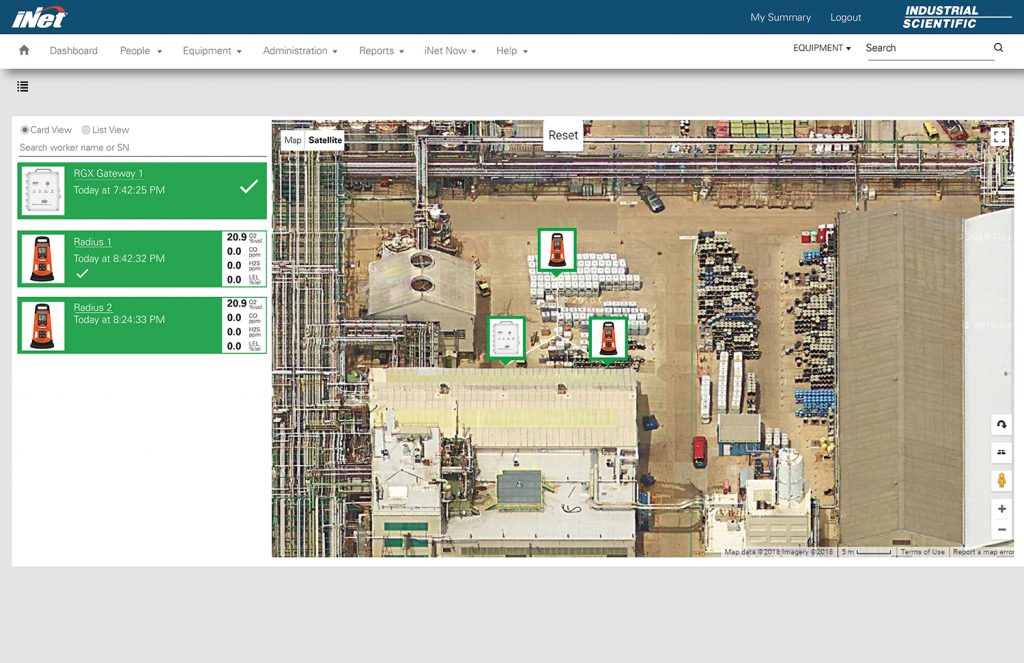
Benefits of Real-Time Area Gas Monitoring
-
Enhanced Safety: Immediate detection and alerts reduce the risk of accidents.
-
Regulatory Compliance: Assists in meeting industry safety standards.
-
Operational Efficiency: Real-time data allows for prompt decision-making and response.
Key Features of Advanced Area Gas Monitors
- Multi-Gas Detection: Capability to monitor multiple gases simultaneously.
- Wireless Connectivity: Enables remote monitoring and data access.
- Durability: Designed to withstand harsh industrial environments.
Real-Time Area Gas Monitoring from Industrial Scientific
Industrial Scientific’s Radius BZ1 Area Monitor is a rugged, portable area gas monitor that can be deployed in seconds to monitor up to seven gases simultaneously. With local and remote monitoring options, everyone from the teams working nearby to safety managers off site will know there’s a hazard and how to respond. The Radius BZ1 also now supports sensor options for detecting Hydrogen Chloride (HCl), Chlorine Dioxide (ClO2), and infrared (IR) sensors for hydrocarbon (propane) and Methane (CH4).
With these new sensor offerings, the Radius BZ1 can be used more extensively to detect hazardous gases in common applications–including fence line and perimeter monitoring, hot work, confined space entry, emergency response, and more–across industries spanning paper and pulp, water and wastewater, and food production, among others.
The Radius BZ1 Area Monitor also communicates with the RGX Gateway, an intrinsically safe transfer point of real-time information. Data is easily transferred from the instruments via the RGX to iNet® Now, which provides real-time text and email alerts for gas hazards, panic, and man-down situations on a computer or mobile device using a cellular, wi-fi or Ethernet connection—allowing safety personnel to see and respond to incidents as they happen. Plus, this entire wireless solution can be set up in minutes without the need for additional infrastructure or IT support.
Talk to an expert today to learn more about real-time area gas monitoring.
